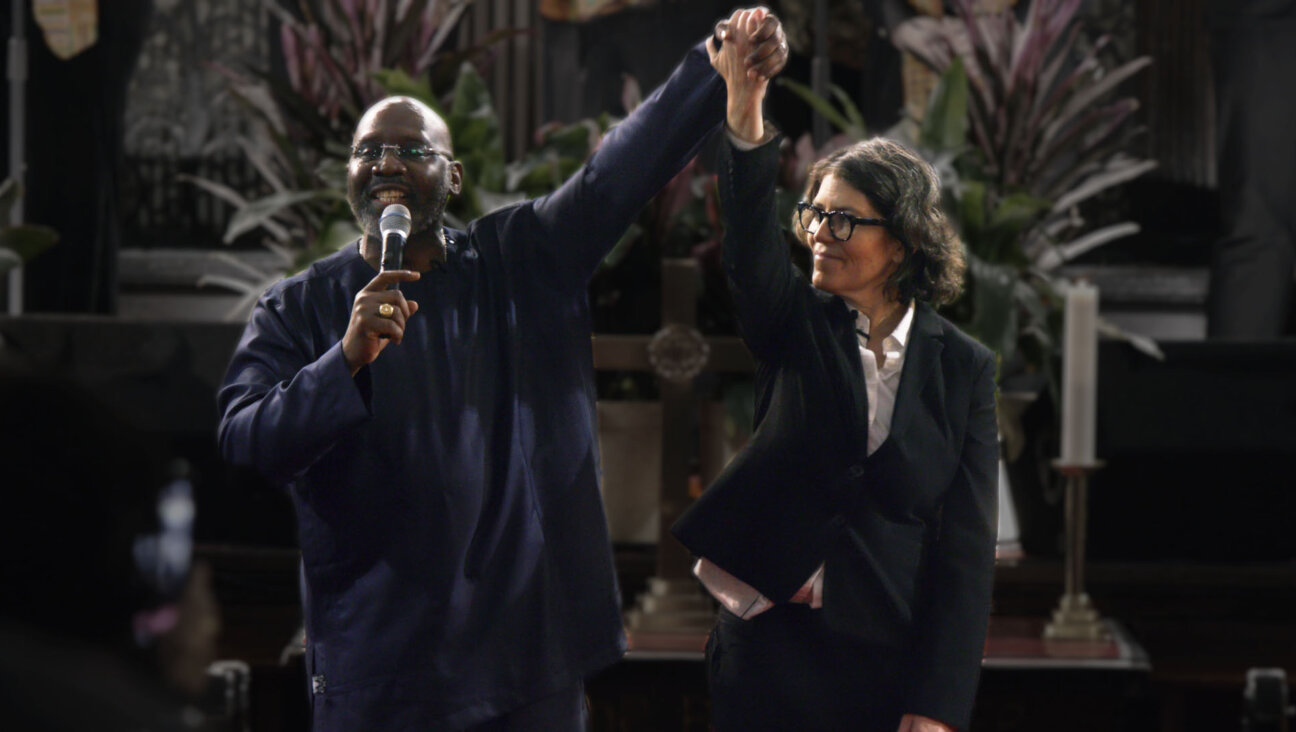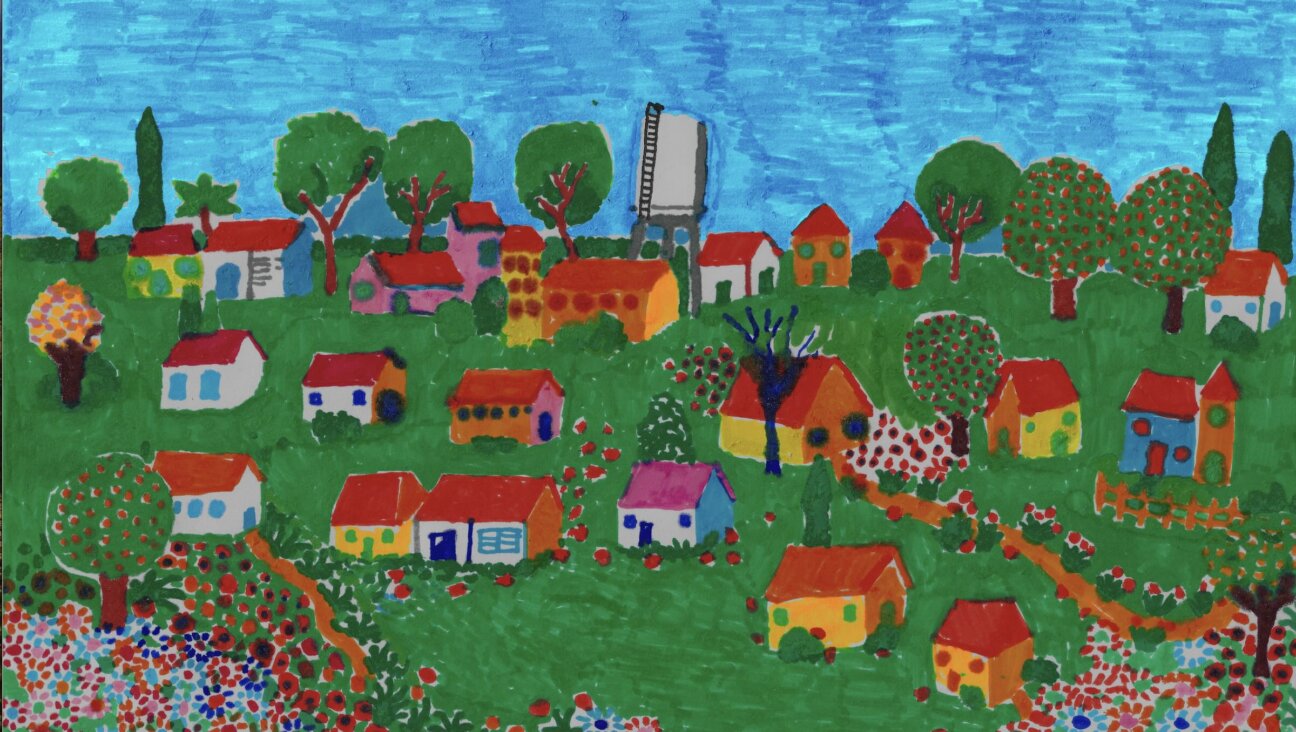Who Benefits From Service Trips?

Heavy Lift: AVODAH: The Jewish Service Corps, teaches its volunteers, like these two in New Orleans, to look at the bigger picture. Image by Courtesy AVODAH
Every year, hundreds upon hundreds of American Jews go to “do service” in the name of tikkun olam, or repairing the world. Some work in their own neighborhoods, others work in poor areas close to their own neighborhoods and others get on a plane to “do service” in New Orleans, Central America or elsewhere around the world.
It’s worth asking who, exactly, is served by these efforts. In most cases, it’s not the needy who are ostensibly being served; rather, it’s privileged volunteers who are often paying to “do service.”
For instance, it can cost upward of $18,000 to send a dozen American college students to build latrines in Central America for a week; in most cases, less than a third of that money is used directly for materials or local labor. In other words, if the American Jewish community sent the money but not the college students, then it could build three times as many latrines.
As a way of alleviating human suffering, service learning projects are usually terribly ineffective. As efforts to make a difference in the life of people in need, these trips simply don’t make sense; neither do many other “service” opportunities, whether they involve getting on a plane or making sandwiches during mitzvah day.
Alleviating suffering, however, is not and should not be the goal of most of these programs. These programs can and should exist to educate American Jews about what it means to live a life of effective ethical responsibility, and they need to be designed with that goal in mind. These programs can’t make effective laborers, but they can and should make effective Jewish citizens.
Powerful service learning programs affect the hearts, heads and hands of those who are serving, and those programs are deliberate and responsible about interactions with those who benefit from the service.
The heart is where we learn to be sensitive to the world; the head is where we learn to comprehend the world and the hands are where we learn to respond effectively to the world.
The first and easiest trait for Jewish service learning programs to inculcate is sensitivity. Before any leader can be effective, she must be sensitive to her surroundings, aware of things that are not immediately obvious. The world is full of things that we see every daybut fail to notice because we don’t look closely enough. By and large, those who grow our food, clean our homes and care for our elderly are invisible. By and large, the world’s 2.6 billion chronically underfed people are invisible. Can we learn to look closely enough to see what is really happening in our world?
Service learning programs can be an unparalleled way to sensitize students and to open their hearts. Every city in the world has a working class that tends to the needs of the moneyed class. While cities proudly present their Fifth Avenues and Rodeo Drives, the places where the serving class lives are often hidden from view.
Most participants in Jewish service learning programs come from relatively privileged backgrounds. They usually enjoy the casual social privilege that comes with white skin, along with the unspoken assumption that they will finish high school and college. And they are likely to have no idea what life is like for people who work (or hope to work) in menial jobs; who cannot count on access to food, water or medicine, or who endure oppression.
Service learning programs can find ways to appropriately and respectfully partner with local organizations that can bring participants to the parts of cities that are kept from view. Students whose eyes are sensitized by high-quality service learning programs will come back to their regular surroundings and see things a little differently.
For instance, students who live in apartment buildings, particularly in New York, might try to enter their own buildings through the service entrance and reflect on what their building shows to people who enter through the back door and to people who enter through the front. Students might come to question why separate entrances need to be maintained at all. Effective service learning programs will be more concerned with inculcating in students the habit of questioning the world they inhabit than they will be with particular answers.
It’s relatively easy to engage the heart at the level of sensitivity; more challenging is engaging the mind at the level of comprehension. For a service learning program to be effective and responsible, it needs to help its participants understand that the suffering they see is always part of a larger whole. It can be very difficult for service learning participants to understand the invisible forces that shape the world around them. The Cold War policies that shaped Latin America seem like ancient history, and urban planning and economic policy can be fantastically dull. Poverty and hunger, however, are created and alleviated by policies and, to paraphrase the Rambam, we simply cannot do good in a world we don’t understand.
Injustice on a large scale is never simply an accident but invariably the result of particular policies promoted or opposed by people with power. Even on a rudimentary level, participants can be shown that the people in the country or town to which they are traveling don’t just happen to be poor — there is a reason for their impoverishment. Perhaps a factory closed, or a road was routed in a disadvantageous way. Perhaps zoning, tax or other policies shaped the environment in ways that are not immediately obvious. Before embarking on a service learning program, students can and should research the place that they are going to, particularly if it is their own town. Where does money in the town come from? What is the income distribution? How many people from different racial backgrounds are in the town?
The willingness to teach these difficult topics is part of what separates quality Jewish service learning from ritual theater in which the “natives” play the victims and the Jewish participants play the heroes. American Jewish college students may be mediocre bricklayers and peanut butter sandwich makers, but if we teach them how, they can be excellent informed citizens who hold governments and corporations accountable for the effects they have on people. Of course, comprehension is only as good as what you do with it. The best Jewish service learning programs develop hearts and minds and also help participants meaningfully respond to what they encounter. Service learning programs are often built with the assumption that the work the participants do in the field — making sandwiches, building latrines, clearing fields — will repair the world. But unskilled volunteers, no matter how well meaning, rarely solve difficult problems. Participants feel great when they grab shovels and pickaxes and pose for Facebook pictures, but real change is rarely photogenic. Real change takes not only sensitivity and comprehension, but also fortitude and skill. We know this well from other realms of life. If you’re having heart palpitations, you don’t want to hear that the fourth-graders, motivated by tikkun olam, are coming to “make a difference.” And if you are trying to improve your life in Guatemala, New Orleans’s Lower Ninth Ward or Newburgh, N.Y., you take no solace from knowing that well-intentioned volunteers who “want to make a difference” are coming; you need help from someone who knows what he or she is doing.
Service learning programs can be more powerful if they build mechanisms for effective action from the beginning. For most participants in service learning programs, effective action will take the form of philanthropy and advocacy. For instance, participants in any service learning program could be required to know the name and phone number of their representatives in Congress and the committees on which they serve. Participants could contact the representative’s office to discuss what they have learned in the field and to ask what he or she is doing regarding these issues.
Similarly, participants could commit to fundraising for a partner organization in the field and begin thinking together about what information they would need in order to honestly represent the organization to their friends and families. These components need to be thought of in advance and built into the fabric of the program from orientation; otherwise, when participants return from the “high” of the experience to everyday life, these “supplemental” activities will be lost in the shuffle; however, these supplemental activities are precisely where participants can make the greatest difference.
Service learning programs that do not take the challenge of building effective advocacy or fundraising into their program run the risk of becoming another empty Jewish ritual, heavy on stagecraft but drained of meaning. Service programs that do not make a material difference in the lives of the people they hope to serve are not service programs — they are photo-ops designed to meet the narrative and photographic needs of American Jews.
Volunteer programs are built on the premise that everyone can make a difference. It’s true — everyone can make a difference, both in his or her own life and in the lives of others. The way to make a difference, though, is not by staging elaborate photo opportunities, but by helping students to develop hearts that are more sensitive to the needs of others, heads that understand the systems that lead to suffering and hands that are engaged in effective work.
Brent Chaim Spodek is the rabbi of Beacon Hebrew Alliance in Beacon, N.Y. He was previously the Rabbi in Residence at American Jewish World Service and the Marshall T. Meyer Fellow at Congregation B’nai Jeshurun in New York.
A message from our Publisher & CEO Rachel Fishman Feddersen

I hope you appreciated this article. Before you go, I’d like to ask you to please support the Forward’s award-winning, nonprofit journalism during this critical time.
We’ve set a goal to raise $260,000 by December 31. That’s an ambitious goal, but one that will give us the resources we need to invest in the high quality news, opinion, analysis and cultural coverage that isn’t available anywhere else.
If you feel inspired to make an impact, now is the time to give something back. Join us as a member at your most generous level.
— Rachel Fishman Feddersen, Publisher and CEO























